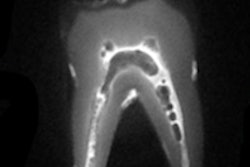
A team of Japanese researchers who looked at more than 200 patients with orofacial pain has found that early consultation with a dentist is useful in arriving at a differential diagnosis and preventing this pain from becoming a chronic problem.
"Orofacial pain is usually complex and persistent, and the diagnosis or treatment is difficult," said study author Yumiko Tomoyasu, DDS, PhD, from the department of dental anesthesiology and special care dentistry at Okayama University, in an interview with DrBicuspid.com.
She added that although it is necessary to diagnose and treat orofacial pain early to avoid an increase in complexity and a shift to chronic pain, there have been few reports on dental patients with orofacial pain and the clinical information remains insufficient.
"Therefore, we performed a clinical review," Dr. Tomoyasu said.
Some of the factors that make this study unique are that the location of the orofacial pain is classified in detail and the factors involved with each type of diagnoses have been evaluated, as have the treatment responses, according to Dr. Tomoyasu.
She and her colleagues retrospectively investigated the characteristics of 221 dental patients (52 males and 169 females) between the ages of 16 and 89 years with orofacial pain (Acta Medica Okayama, October 2014, Vol. 68:5, pp. 269-275).
They collected data from the outpatient medical records in the clinic of dental anesthesiology at Okayama University for the years of January 2001 to December 2012 and considered the patients' diagnoses, gender, age, pain location, pain duration, treatments, and their response to treatments.
The researchers classified patients using criteria for orofacial pain modied from the guidelines of the Japanese Society of Orofacial Pain, and they noted responses to treatments as remission, signicant improvement, partial response, and no response.
More than 81% of the patients had nonodontogenic pain, the study authors noted. Specifically, the patients had neuropathic pain (30%), myofascial pain (23%), psychogenic pain (20%), and other (7%) types of pain such as temporomandibular disorders and glossitis. The rest (17%) had odontogenic toothaches, and two patients could not be given a denite diagnosis.
The authors noted that neuropathic and psychogenic pain are likely to occur in relatively older people, while myofascial pain and odontogenic toothache tend to occur in middle-aged people. The prevalence of pain was more than three times as high in females compared with males, they added.
The locations of pain included the jaws, face, tongue, temporomandibular joint, neck, head, lips, mouth floor, and pharynx.
"Our results showed that orofacial pain most frequently occurred in the jaw region," the authors wrote. "On the other hand, the face was the most frequent location in patients with neuropathic pain, and the tongue was the most frequent location in patients with psychogenic pain."
More than half the patients had pain for more than six months from onset until their first visit to the clinic. The duration of pain was less than three months in 70 patients, between three and six months in 25 patients, between six months and two years in 48 patients, and more than two years in 71 patients, and unknown in seven patients.
While examining the treatments used for treating the pain, the researchers found that pharmacotherapy is the mainstay of treatment for orofacial pain, and the choice of medication depends on the type of pain diagnosed. For example, patients who were diagnosed with neuropathic pain were administered drugs such as carbamazepine and pregabalin, and patients with psychogenic pain were mainly administered ethyl loflazepate, sulpiride, and/or amitriptyline hydrochloride.
Of the patients included in the study, 151 underwent treatment with pharmacotherapy, while 55 received splint therapy or other treatments such as nerve block, dental treatment, physiotherapy, and/or psychotherapy, such as counseling.
The authors presented treatment response of 169 patients (52 patients could not be evaluated because of discontinued visits). The rate of remission or significant improvement was 67% for neuropathic pain, 59% for myofascial pain, 60% for psychogenic pain, and 85% for odontogenic pain.
About two-thirds of the patients with orofacial pain whose course of treatment was confirmed achieved remission or signicant improvement, and those with odontogenic toothache had the highest rate of improvement, they noted.
"This result indicates that odontogenic toothache is one of the most important entities to treat easily," the study authors concluded. "General practitioners should thus be attentive to the possibility of odontogenic toothache in patients with orofacial pain."



















